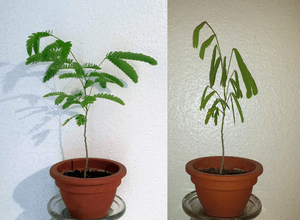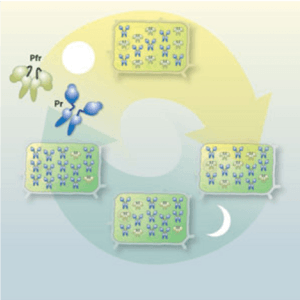Ruth Lyttle Satter facts for kids
Quick facts for kids
Ruth Lyttle Satter
|
|
|---|---|
 |
|
| Born | March 8, 1923 |
| Died | August 3, 1989 (aged 66) |
| Alma mater | Barnard College University of Connecticut |
| Spouse(s) | Robert Satter |
| Children | Four |
| Scientific career | |
| Fields | Botany, plant physiology, chronobiology |
| Institutions | Bell Laboratories Maxson Company University of Connecticut Yale University |
Ruth Lyttle Satter (born March 8, 1923 – died August 3, 1989) was an American botanist. She is best known for her amazing work on how plant leaves move with the circadian rhythm. This is like an internal clock that tells plants when to open and close their leaves.
Contents
Ruth Satter's Life Story
Ruth Lyttle Satter was born in New York City on March 8, 1923. Her maiden name was Ruth Lyttle.
She went to Barnard College and earned a degree in math and physics in 1944. After college, she worked at places like Bell Laboratories. In 1946, she married Robert Satter.
In 1947, Ruth became a homemaker to raise her four children: Mimi, Shoshana, Jane, and Dick. She loved plants very much. In 1951, she finished a special training program at the New York Botanical Garden. From 1953 to 1963, she taught horticulture (the art of growing plants) at the YMCA Hobby School.
Becoming a Plant Scientist
In 1964, Ruth decided to go back to school. She started studying plant physiology at the University of Connecticut. This field looks at how plants work. She earned her PhD in botany in 1968.
During her studies, Ruth began to figure out how plants keep their internal clocks. She studied how red and far-red light affects plants. This light helps plants grow and change, a process called morphogenesis. Her work on circadian rhythms became very important. It greatly impacted the field of chronobiology, which is the study of living things' natural rhythms.
Research at Yale University
After getting her PhD in 1968, Ruth joined the lab of Arthur W. Galston at Yale University. She worked there as a staff biologist and then as a research associate. At Yale, she continued her research on plant chronobiology. She focused on how leaves move.
Her research showed that tiny changes in chemicals called ions inside leaf cells make the leaves move. She also found that the same systems control leaf movement whether the plant has a regular light-dark cycle or stays in constant light or darkness. In 1980, she also helped write a textbook called The Life of the Green Plant. It was about plant physiology and botany.
Later Work and Health
In 1980, Ruth Satter also became a professor at the University of Connecticut. There, she discovered how light signals are sent inside the leaf motor cells. This process is called the phosphatidylinositol cycle.
That same year, Ruth was diagnosed with chronic lymphocytic leukemia, a type of cancer. But this made her even more focused on her science. She published many papers and worked on a book. She became famous around the world for her work on chronobiology. She also stayed active with her husband, traveling to bike, swim, and explore different cultures.
Death and Lasting Impact
Ruth Satter stayed active for most of her illness. But in the late 1980s, her health got worse. She passed away at age 66 on August 3, 1989.
Ruth Satter left a lasting impact. Her will created the Ruth Satter Memorial Award. This award gives $1000 to women who paused their education for at least three years to raise a family.
In 1990, the Ruth Lyttle Satter Prize in Mathematics was also created in her honor. Her sister, Joan S. Birman, donated the money for this prize. It is given every two years. It celebrates Ruth's dedication to research. It also encourages women in science by giving $5000 to a woman who has made a big contribution to math research.
How Plants Move: Ruth Satter's Discoveries
Understanding Circadian Leaf Movement

People first noticed that plant leaves move in a daily rhythm way back in the 1700s. This movement was so important for seeing plant circadian rhythms that it was called the "hands of the circadian clock." But it wasn't until Ruth Satter's amazing work that we understood how this movement actually happens at a tiny, molecular level.
Ruth Satter worked to understand special plant parts called pulvini. These are like hinges found at the base of leaves and leaflets. They allow leaves to fold down at night and open up during the day.
She found that changes in the amount of potassium and chloride ions (tiny charged particles) in the pulvini cause water to move in and out of the cells. This water movement is called Osmosis. The pulvini have two types of cells: flexor cells and extensor cells. Ruth Satter showed that when flexor cells gain ions and water, they become stiff. At the same time, extensor cells lose ions and water and become soft. These opposite changes make the pulvinus bend or straighten, which lifts or lowers the leaves.
Ruth Satter also worked with Richard Racusen to study how the electrical charge (called membrane potential) in pulvini cells changes. She found that these changes were too fast to be explained only by potassium ions moving. She discovered a special "proton pump" that uses energy to push protons (H+) out of the cell. This pump helps create the quick electrical changes and also helps potassium ions move. So, Satter and Racusen figured out that these electrical changes drive the ion movement needed for leaves to move in their daily rhythm.
They also looked at the pH (how acidic or basic something is) in the flexor and extensor cells. They saw that the pH levels in these cells were always opposite. This showed that proton pumps were active in flexor cells when it was dark and in extensor cells when it was light.
How Light Controls Leaf Movement
Ruth Satter also figured out how light helps plant leaves "set" their internal clock. This process is called entrainment. She showed that special plant pigments called phytochromes help the pulvini cells react to red and far-red light.
Phytochromes have two forms that can change into each other: Pfr and Pr. When red light hits the pulvinus, the phytochrome changes to the Pfr form. This form makes the cell membrane less charged (depolarizes it) and opens channels for potassium ions to flow, which helps the leaf close. When far-red light hits, the phytochrome changes to the Pr form. This form makes the cell membrane more charged (hyperpolarizes it) and closes the potassium ion channels, which helps the leaf open.
Over 24 hours, the amount of red and far-red light in the environment changes. Because of this, the form of phytochrome in the pulvinus also changes. This causes the plant leaves to open or close based on the light cycle around them.
Satter also studied how blue light affects leaf movement. She and her team found that blue light can shift the timing of leaf movement in plants like Samanea saman and Albizia. This means blue light could make leaves open or close earlier or later than usual. While these studies showed blue light's effect, the exact part of the plant that senses blue light was discovered later.
See also
 In Spanish: Ruth Lyttle Satter para niños
In Spanish: Ruth Lyttle Satter para niños


